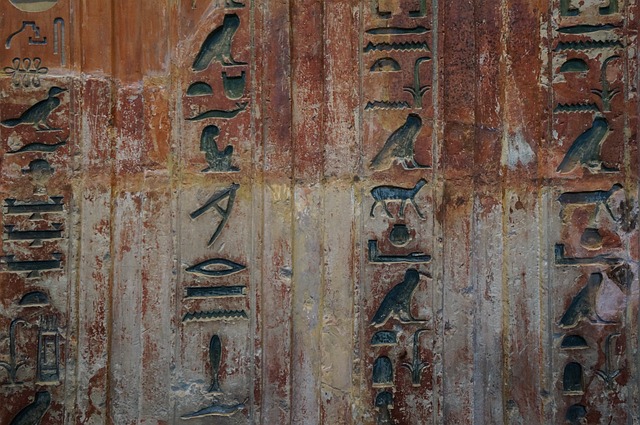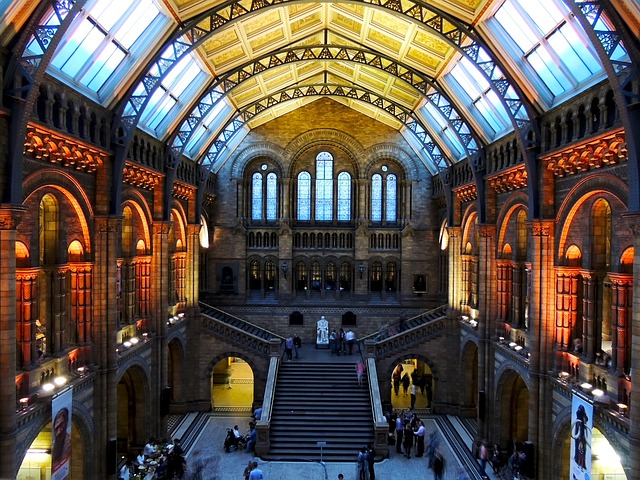Museums Uncovered: Your Essential Travel Guide to Artistic Adventures
Welcome to the world of museums, where the past meets the present and artistic expression knows no bounds. Museums aren’t just buildings filled with artifacts; they are vibrant spaces that tell stories, inspire creativity, and foster understanding of diverse cultures and histories. This guide invites you to embark on an artistic adventure, uncovering the hidden gems and renowned institutions that make museums a vital part of our global heritage.
Understanding the Importance of Museums
Museums serve as custodians of history, art, and culture. They are spaces of learning, exploration, and inspiration, where visitors can delve into the rich tapestry of human experience. Whether you are an art enthusiast, a history buff, or a casual traveler, museums offer something for everyone. They are not merely static displays of artifacts; they are dynamic institutions that adapt to contemporary issues, reflecting societal changes and innovations.
By visiting museums, you engage with both the tangible and intangible aspects of culture. You might marvel at a centuries-old painting, ponder the craftsmanship behind an ancient artifact, or find yourself moved by a contemporary installation that challenges perceptions. Museums encourage critical thinking, promote cultural literacy, and foster empathy through the narratives they present.
Types of Museums
When planning your artistic adventure, it’s essential to understand the variety of museums that exist around the world. Each type offers unique insights and experiences, enriching your travels in different ways.
Art Museums
Art museums are perhaps the most celebrated type, showcasing everything from classical masterpieces to contemporary artworks. They often feature paintings, sculptures, photography, and mixed media installations. Renowned institutions like the Louvre in Paris, the Met in New York City, and the National Gallery in London offer extensive collections spanning centuries and styles. Visiting an art museum allows you to explore the evolution of artistic movements and engage with the emotional power of visual expression.
History Museums
History museums provide a window into the past, meticulously curating artifacts and narratives that tell the story of a specific region, era, or theme. From natural history museums that showcase our planet’s diverse ecosystems to cultural history museums that celebrate the lives and traditions of specific communities, these institutions help preserve our heritage. A visit to a history museum can deepen your understanding of global events, local traditions, and human development.
Science Museums
Science museums make complex concepts accessible and enjoyable. They offer interactive exhibits, demonstrations, and hands-on activities that cater to visitors of all ages. These museums focus on the wonders of science and technology, often featuring exhibits on space exploration, biology, physics, and environmental studies. Institutions like the Exploratorium in San Francisco and the Science Museum in London are perfect examples of how education meets entertainment.
Children’s Museums
Children’s museums are designed to stimulate young minds and promote learning through play. These interactive spaces encourage creativity and exploration, allowing children to engage with exhibits that foster curiosity and critical thinking. From role-playing activities to hands-on science experiments, children’s museums offer enticing environments where kids can learn while having fun.
Specialized Museums
Specialized museums focus on a specific subject or theme, providing depth and insight into their area of expertise. Examples include automobile museums, textile museums, and even museums dedicated to specific historical events. These institutions can offer a unique perspective and attract niche audiences, providing an opportunity to explore interests in detail.
Planning Your Museum Visits
To maximize your experiences at museums, proper planning is essential. Here are some key considerations to ensure your visits are enriching and enjoyable.
Research the Museums
Start by researching museums in your travel destination. Look into their collections, current exhibitions, and scheduled events. Some museums offer temporary exhibits that may not be part of their permanent collection, providing a unique opportunity to experience something new. Make a list of must-see museums and prioritize your visits based on your interests.
Check Admission Fees and Opening Hours
Before heading out, check the museum’s admission fees and opening hours. Many museums offer special discounts for students, seniors, and children, while some have free admission days during the month. Knowing this information in advance helps you budget and plan accordingly.
Take Advantage of Guided Tours
Many museums offer guided tours led by knowledgeable docents or curators. These tours can enrich your understanding of the exhibits and provide context that you might miss on your own. If you have a particular interest in a specific theme or artist, consider booking a specialized tour to delve deeper into the subject matter.
Engage with Interactive Exhibits
Modern museums increasingly incorporate interactive elements designed to engage visitors. Don’t hesitate to participate! Whether it’s using augmented reality apps, hands-on activities, or multimedia presentations, immersing yourself in these experiences can greatly enhance your understanding and enjoyment.
Allow Time for Reflection
Museums can be overwhelming in their vastness and depth. Allocate time to reflect on what you’ve seen. Find a quiet corner to ponder your experiences or jot down thoughts in a travel journal. Engaging with art or history is not just about consumption; it’s about contemplation and personal connection.
Must-Visit Museums Around the World
While museums can be found in nearly every corner of the globe, some stand out as must-visits due to their unique collections, impressive architecture, and influential impact on the art world.
The Louvre, Paris
The Louvre is one of the most famous art museums globally, housing over 380,000 objects, including the iconic Mona Lisa and the Venus de Milo. Its stunning architecture, from the historic palace to the modern glass pyramid entrance, sets the stage for an unforgettable experience. Spending a day at the Louvre could turn into a lifelong passion for art history.
The British Museum, London
Renowned for its vast collection of world art, the British Museum in London showcases artifacts from ancient civilizations to contemporary cultures. The Rosetta Stone and the Elgin Marbles are highlights, but the museum’s diverse array of exhibitions ensures there’s something for everyone. Entry is free, making it one of the most accessible cultural experiences in the world.
The Met, as it’s affectionately known, offers an encyclopedic collection that spans 5,000 years of art. From American masterpieces to ancient Egyptian artifacts, every corner tells a story. The Met also hosts special exhibitions and events, providing a constantly evolving experience. Plan your visit to ensure you can explore its numerous wings.
The Vatican Museums, Vatican City
The Vatican Museums are a treasure trove of Renaissance art, featuring world-famous works like Michelangelo’s Sistine Chapel ceiling and Raphael’s Rooms. The opulent galleries are not just about the art but also the architectural splendor of the Vatican itself. Be prepared for large crowds, and consider booking guided tours to navigate this vast collection effectively.
If your artistic adventure leads you to Florence, don’t miss the Uffizi Gallery. Home to an unparalleled collection of Italian Renaissance art, the Uffizi houses works by Botticelli, Michelangelo, and Leonardo da Vinci. The gallery’s design and location along the Arno River add to its charm, making it a highlight for any art lover.
Participating in Special Events and Exhibitions
Many museums host special events, exhibitions, and programming throughout the year, enhancing your visit with unique experiences. From art fairs to cultural festivals and lectures, participating in these events can add another layer of engagement to your museum adventures.
Art Fairs and Biennials
Art fairs, such as Art Basel or The Armory Show, often collaborate with local museums to showcase contemporary art and highlight emerging artists. These events provide a platform for discussions around modern art while allowing visitors to explore new trends in the art world.
Workshops and Classes
Many museums offer workshops and classes that allow visitors to create art, learn about techniques, or deepen their understanding of artistic movements. These programs can vary from pottery making to painting classes or even digital art workshops, providing a fun, educational experience.
Lectures and Panel Discussions
Museums frequently host lectures and panel discussions led by artists, curators, and scholars. These events provide insight into the creative process and critical discussions around art and culture. Attending these events can tremendously enhance your appreciation and understanding of the exhibits on display.
Exploring Local Culture: Museums Beyond Art
While art museums are a focal point for many travelers, exploring local history and culture is equally essential. Museums reflecting a region’s heritage offer insights into everyday life, traditional practices, and societal dynamics.
Cultural Heritage Museums
Cultural heritage museums focus on preserving and showcasing the unique traditions, customs, and histories of specific communities. These museums often include ethnographic collections, interactive displays, and educational programs aimed at promoting cultural awareness.
Industrial and Maritime Museums
Industrial and maritime museums highlight the role of industry and trade in shaping communities. From shipbuilding and fishing to manufacturing and transportation, these museums tell the stories of the workers and innovations that defined regions. They offer a fascinating glimpse into the past, connecting visitors with local heritage.
Natural History Museums
Natural history museums provide a captivating exploration of the natural world. Exhibits on dinosaurs, fossils, and ecosystems help visitors understand the biology, geology, and paleontology of our planet. Institutions like the Natural History Museum in London and the American Museum of Natural History in New York City present engaging exhibitions that remind us of our connection to the Earth.
Embracing Digital Museum Experiences
With advancements in technology, many museums offer digital experiences that enhance accessibility and engagement. Virtual tours, online exhibitions, and interactive apps allow you to explore museum collections from the comfort of your home, making art and history accessible to a broader audience.
Virtual Tours and Online Exhibits
Many renowned institutions now offer virtual tours, allowing you to navigate through galleries and exhibitions online. Websites provide high-resolution images and detailed descriptions of artworks and artifacts, offering a curated experience that simulates an in-person visit. This makes it possible to explore global collections without traveling, perfect for those unable to visit in person.
Interactive Apps and Augmented Reality
Mobile apps equipped with augmented reality features enhance your museum experience. These apps may provide additional information through interactive elements, allowing you to engage with exhibits in new ways. Some museums also offer scavenger hunts or challenges, turning your visit into a fun and educational game.
Social Media and Community Engagement
Social media platforms have become essential tools for museums to connect with their audiences. Many institutions share behind-the-scenes content, upcoming exhibitions, and educational resources on platforms like Instagram, Facebook, and Twitter. Engaging with museums online fosters a sense of community and encourages deeper connections to the arts and culture.
Concluding Thoughts: The Joy of Museum Exploration
Visiting museums is about more than just observing art and artifacts; it’s about immersing yourself in the stories and cultures they represent. Each museum visit is an opportunity for discovery, offering insights into our shared human experience. Whether you find yourself captivated by a contemporary installation or moved by a historical artifact, these artistic adventures will undoubtedly enrich your travels.
As you plan your next journey, consider weaving museums into your itinerary. With countless destinations to explore and stories waiting to be uncovered, the world of museums promises a lifetime of artistic adventures. So grab your map, pack your curiosity, and get ready to wander through the marvels of human creativity!


